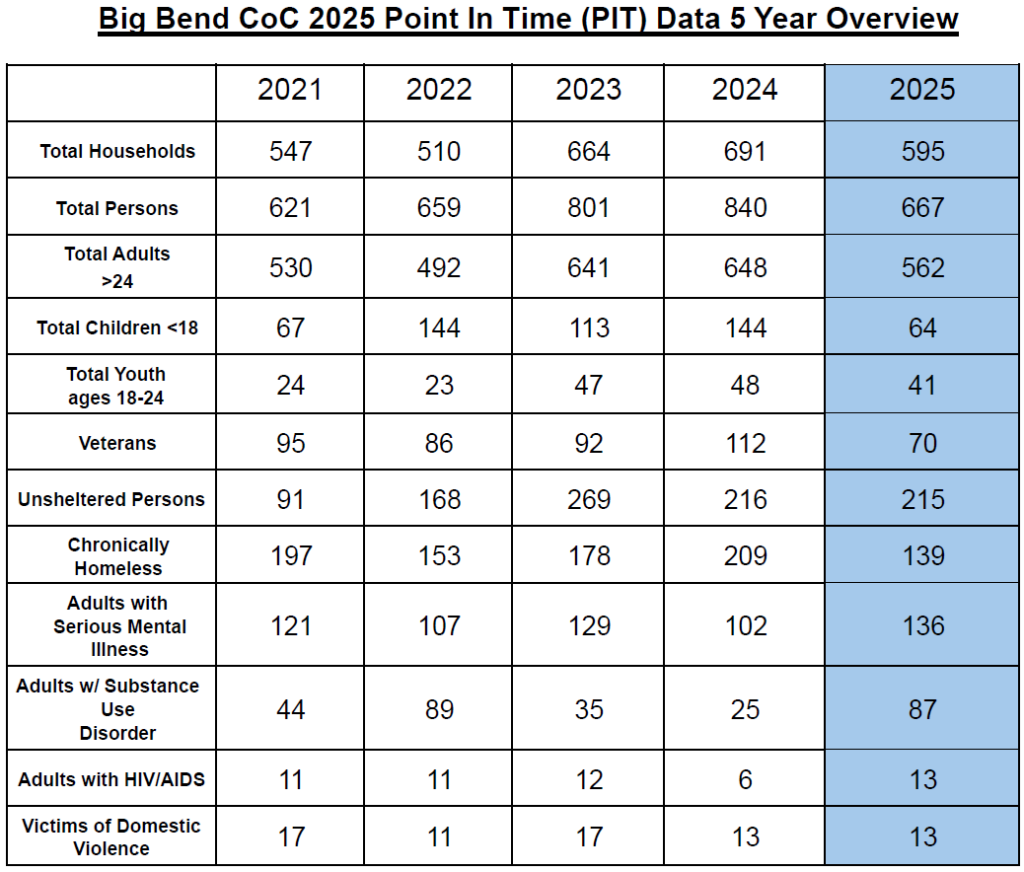We’re proud to share the official results of the 2025 Point-in-Time (PIT) Count, conducted across our Continuum of Care (CoC) on the night of January 27, 2025.
The PIT Count is a vital, annual snapshot of homelessness in our region. It helps us understand how many individuals and families are experiencing homelessness—both sheltered and unsheltered—on a single night. These results directly inform funding decisions, shape local strategies, and help our community target the resources that matter most.

Understanding the Numbers
While this year’s count reflects a decrease in the total number of people experiencing homelessness compared to 2024, it’s important to interpret those numbers with context. The drop is not necessarily a sign of reduced need, but rather the result of several data-related challenges:
Changes in HMIS Participation
Some providers in our region made the decision to discontinue participation in the Homeless Management Information System (HMIS). As a result of this and other operational decisions by these organizations, we were not able to include their client data in the official PIT Count. These programs serve individuals—particularly those experiencing chronic homelessness—whose needs remain very real, even if not reflected in this year’s numbers.Temporary Bed Utilization Gaps
Some emergency shelter programs were operating below full capacity on the night of the count. This can occur for a number of reasons—ranging from program-specific intake processes and safety protocols to staffing shortages or facilities undergoing maintenance. While understandable, lower occupancy during the PIT window reduces the number of people we’re able to count, and in turn, may understate the demand for these services.
One of the most significant impacts of these factors can be seen in the chronically homeless population count, which dropped from 209 in 2024 to 139 in 2025. This change is primarily the result of no longer receiving data from a key provider that previously served a large number of chronically homeless individuals. This shift limits our ability to fully reflect the needs of that population in our region’s data and advocacy.
Why This Still Matters
The PIT Count remains a vital tool for understanding trends, identifying service gaps, and securing federal funding. That said, the accuracy and usefulness of the count depends heavily on comprehensive data participation and collaboration across the system.
We are grateful to all the partners, outreach teams, volunteers, and community members who made the 2025 count possible. Your continued support is essential as we work to ensure that every person experiencing homelessness is counted, seen, and served.



